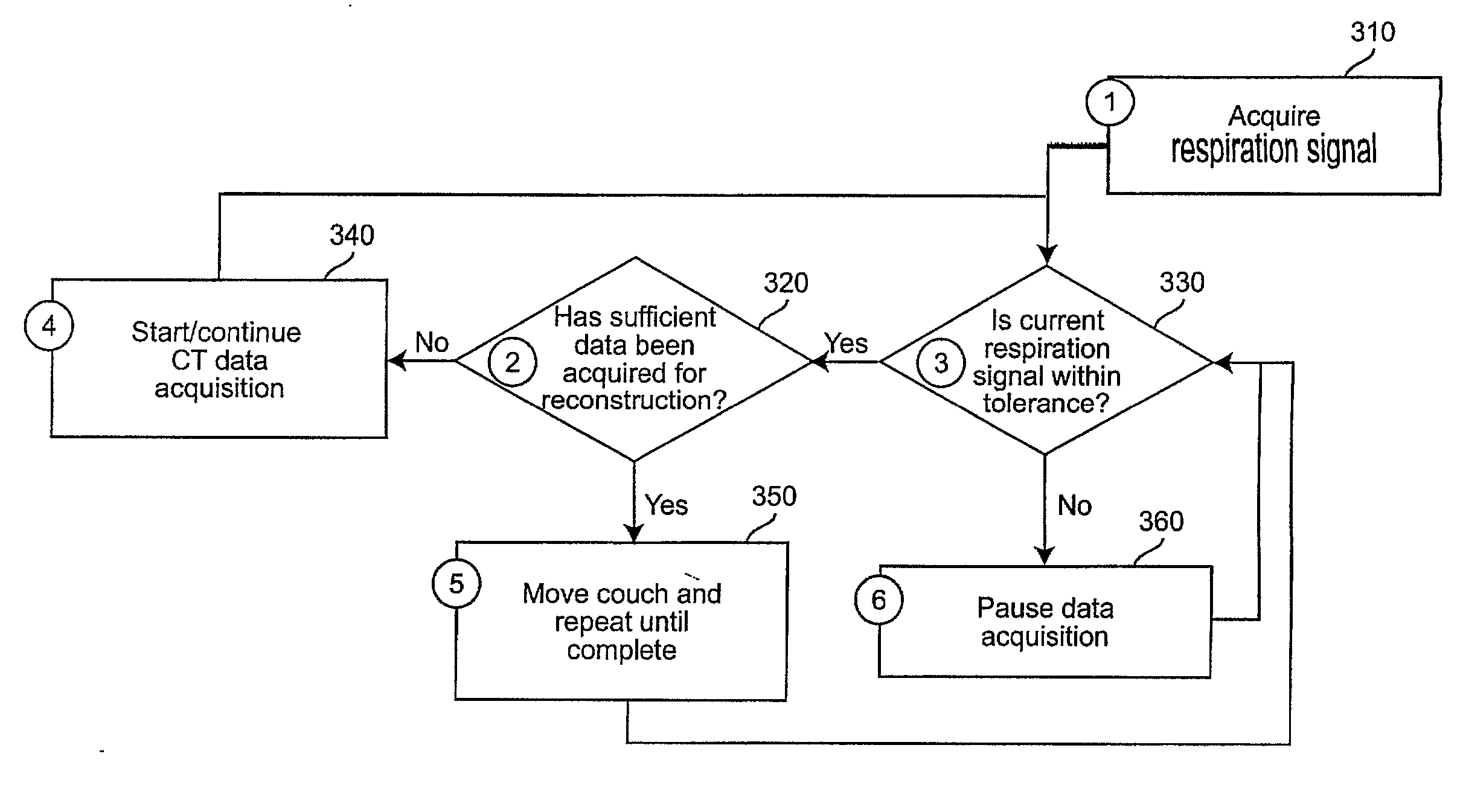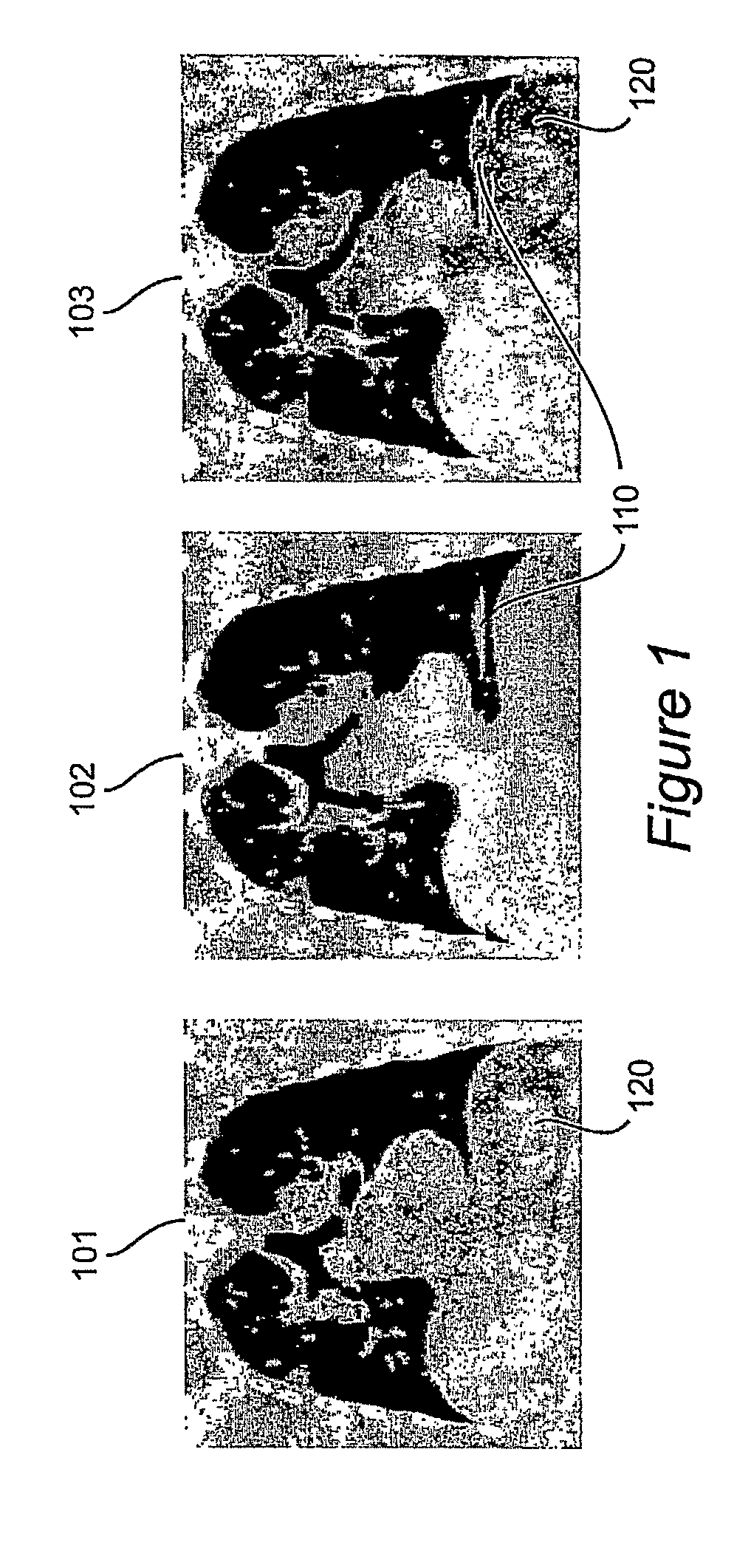Method And System Of Adaptive Control For Reducing Motion Artifacts And Patient Dose In Four Dimensional Computed Tomography
a technology of computed tomography and motion artifacts, applied in the field of thoracic radiology, can solve the problems of thoracic radiology, errors during radiation delivery, temporal and spatial limitations of 4d acquisition with current single-slice technology, and achieve the effect of reducing the magnitude of artifacts introduced
- Summary
- Abstract
- Description
- Claims
- Application Information
AI Technical Summary
Benefits of technology
Problems solved by technology
Method used
Image
Examples
Embodiment Construction
[0024] The adaptive control method described below requires a respiratory monitoring system to be tightly integrated into the CT scan control and interactive control of both the CT acquisition and the couch motion. The method is comprised of several pre-scan steps, the CT data acquisition itself, and post-acquisition processing.
[0025] The first step, as described in Box 1 (item 210) of FIG. 2, involves breathing training. Based on data collected on lung cancer patients at Virginia Commonwealth University, the use of audiovisual breathing training significantly improves respiratory reproducibility. Box 2 (item 220) of FIG. 2 covers how a patient must be given time to fall into a reasonably regular breathing pattern. Once breathing is regular, the next step, as shown in Box 3 (item 230) of FIG. 2, is to learn the respiration pattern of an average breathing cycle. Spatial and temporal tolerances for which data acquisition will / will not occur are given in Box 4 (item 240) of FIG. 2. Th...
PUM
 Login to View More
Login to View More Abstract
Description
Claims
Application Information
 Login to View More
Login to View More - R&D
- Intellectual Property
- Life Sciences
- Materials
- Tech Scout
- Unparalleled Data Quality
- Higher Quality Content
- 60% Fewer Hallucinations
Browse by: Latest US Patents, China's latest patents, Technical Efficacy Thesaurus, Application Domain, Technology Topic, Popular Technical Reports.
© 2025 PatSnap. All rights reserved.Legal|Privacy policy|Modern Slavery Act Transparency Statement|Sitemap|About US| Contact US: help@patsnap.com



